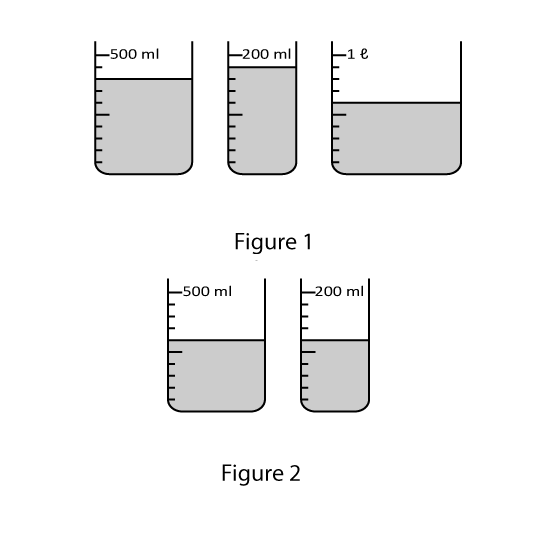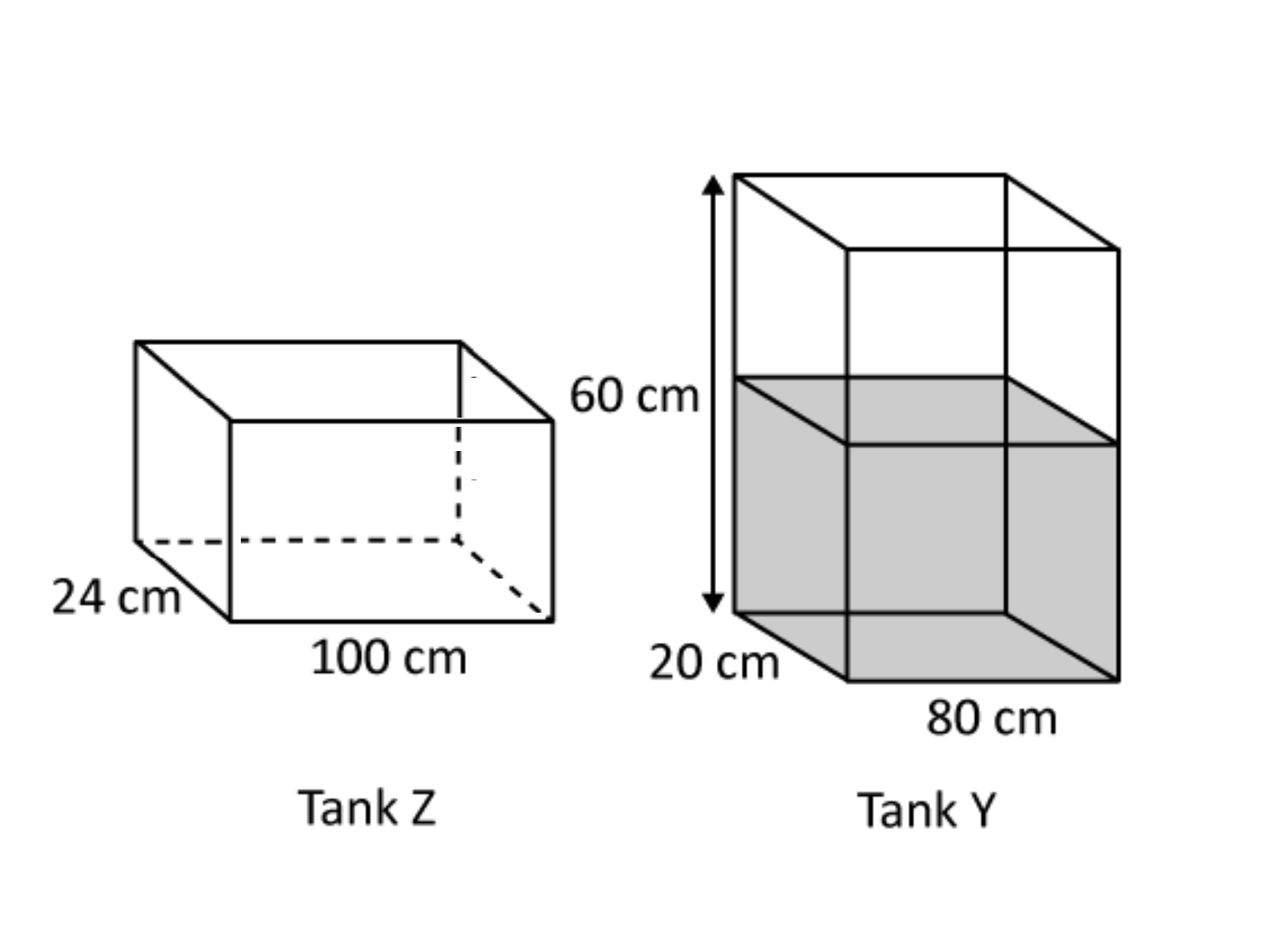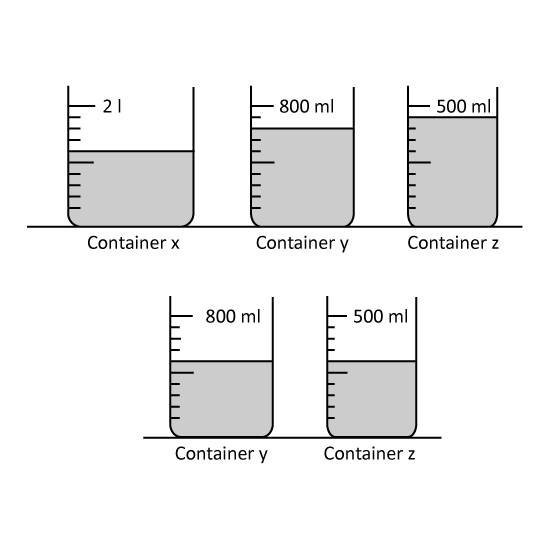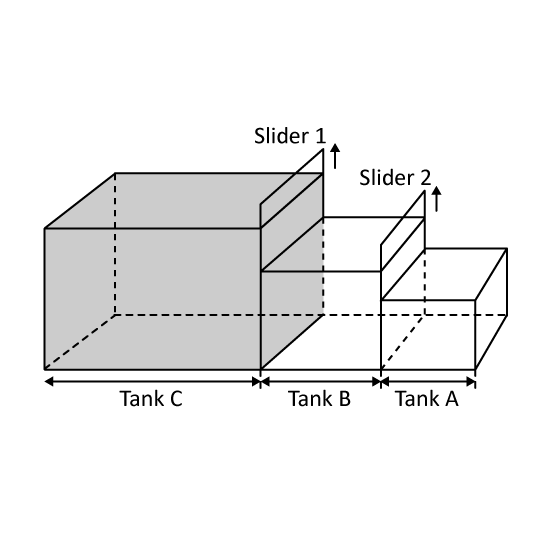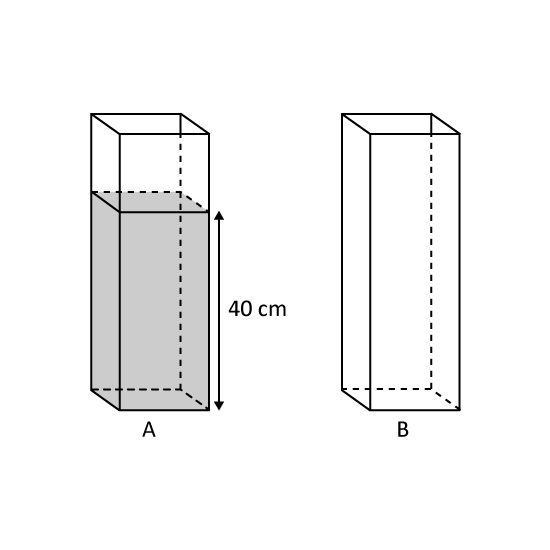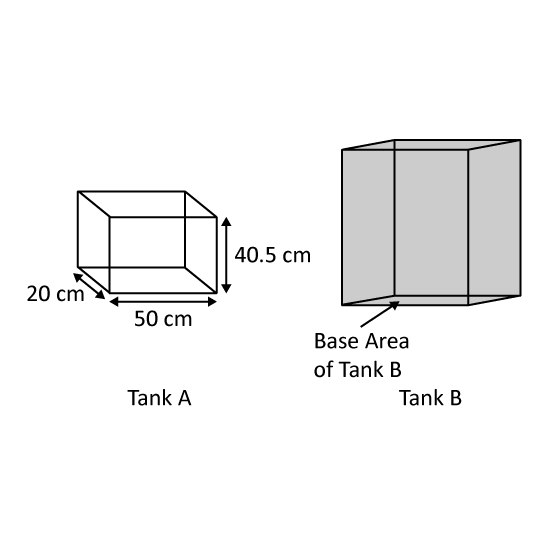Level 3
The diagram shows 3 containers of different dimensions, each separated by a partition. Tank C, measuring 20 m by 15 m by 21 m, is filled with water to its brim. Tank B is an empty cuboidal container with a length of 10 m. Slider 1 is lifted to release
14 of the water from Tank C to Tank B, after which the partition is slid down to separate Tank C and Tank B. Next, Slider 2 is removed and some water from Tank B flows into Tank A such that the height of the water level of Tank B and Tank A is 7 m.
- What is the length of Tank A?
- How many m3 of water are there in Tank B?
Level 3
The diagram shows 3 containers of different dimensions, each separated by a partition. Tank C, measuring 20 m by 15 m by 21 m, is filled with water to its brim. Tank B is an empty cuboidal container with a length of 10 m. Slider 1 is lifted to release
14 of the water from Tank C to Tank B, after which the partition is slid down to separate Tank C and Tank B. Next, Slider 2 is removed and some water from Tank B flows into Tank A such that the height of the water level of Tank B and Tank A is 7 m.
- What is the length of Tank A?
- How many m3 of water are there in Tank B?
